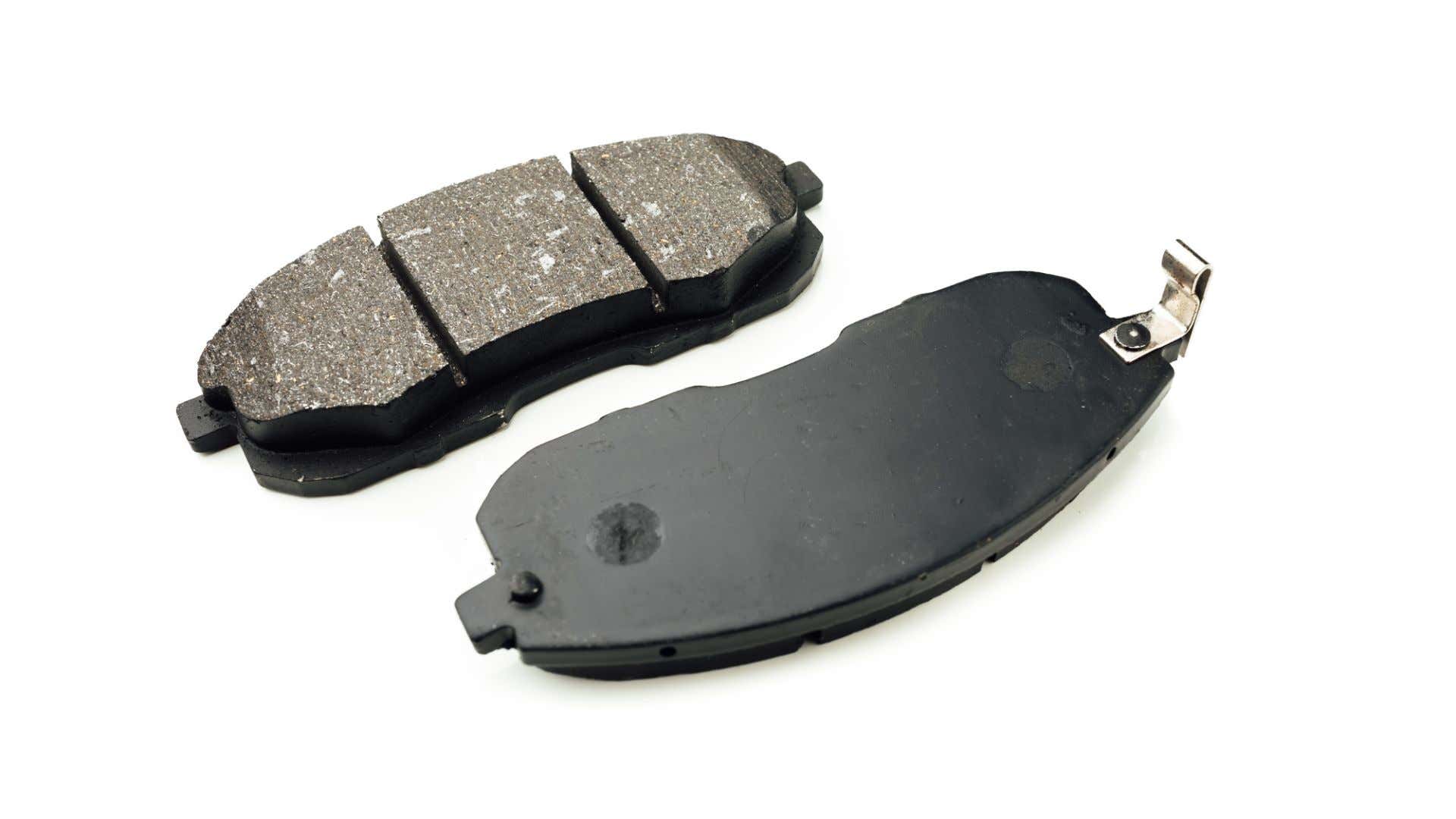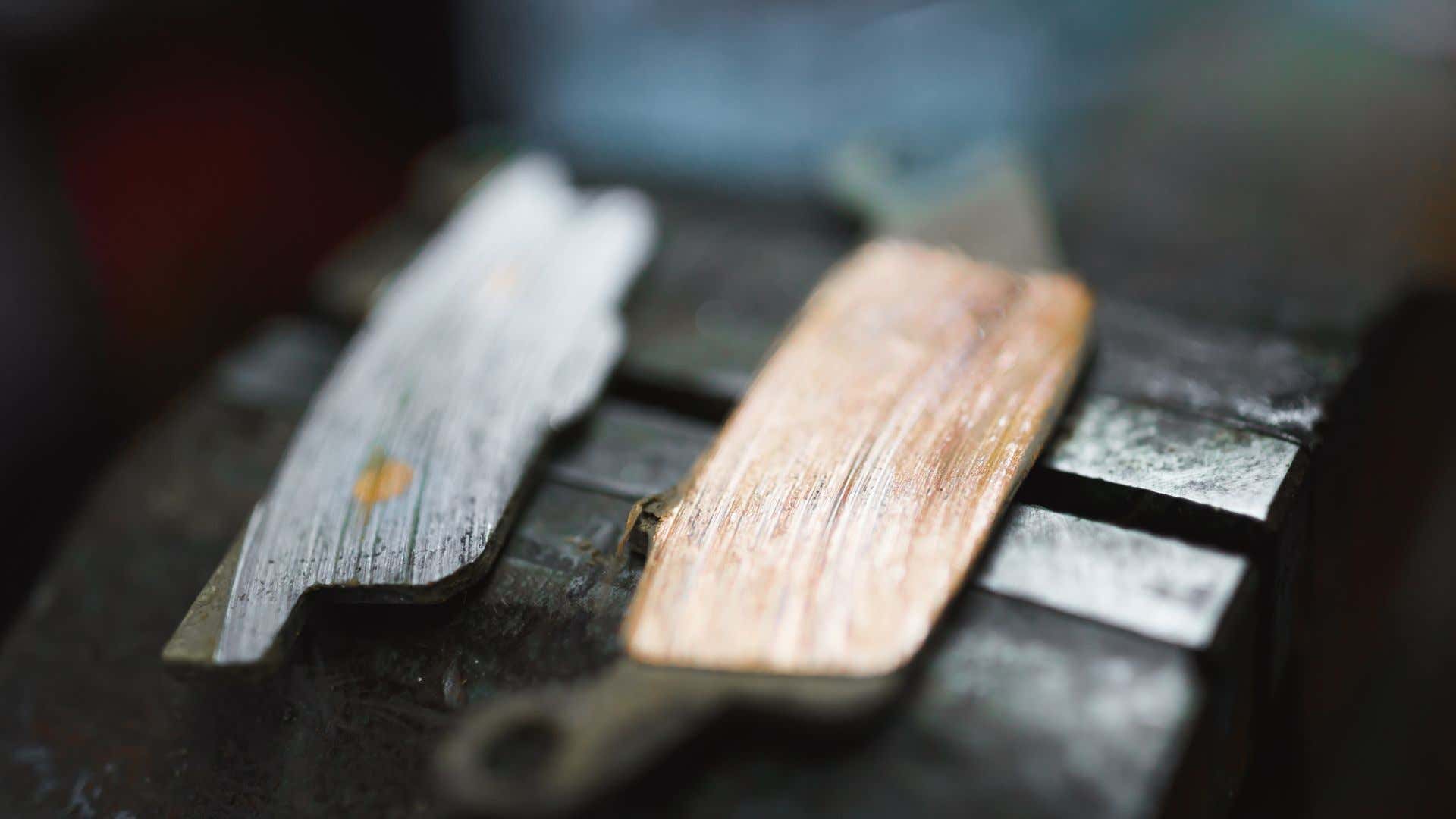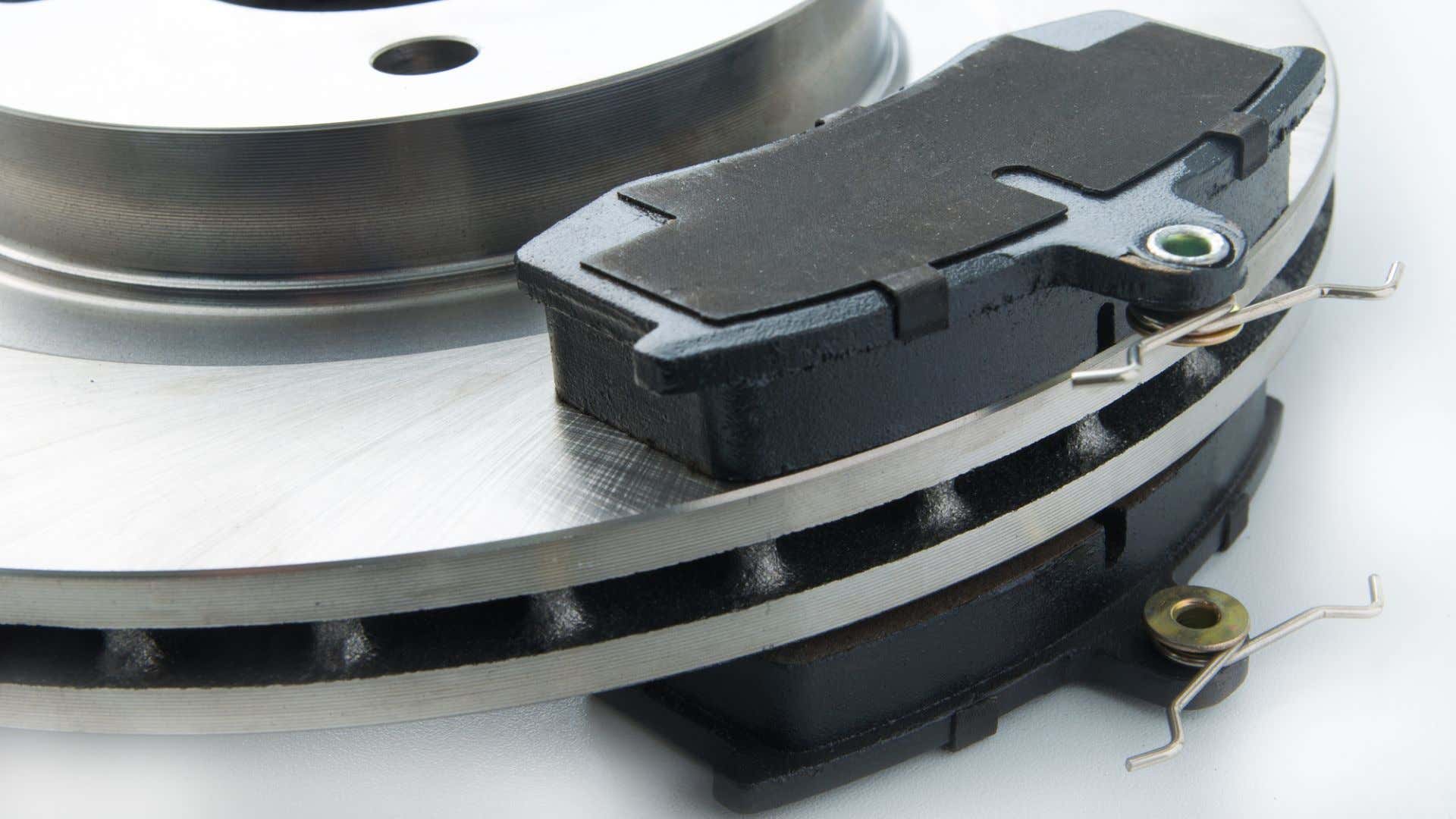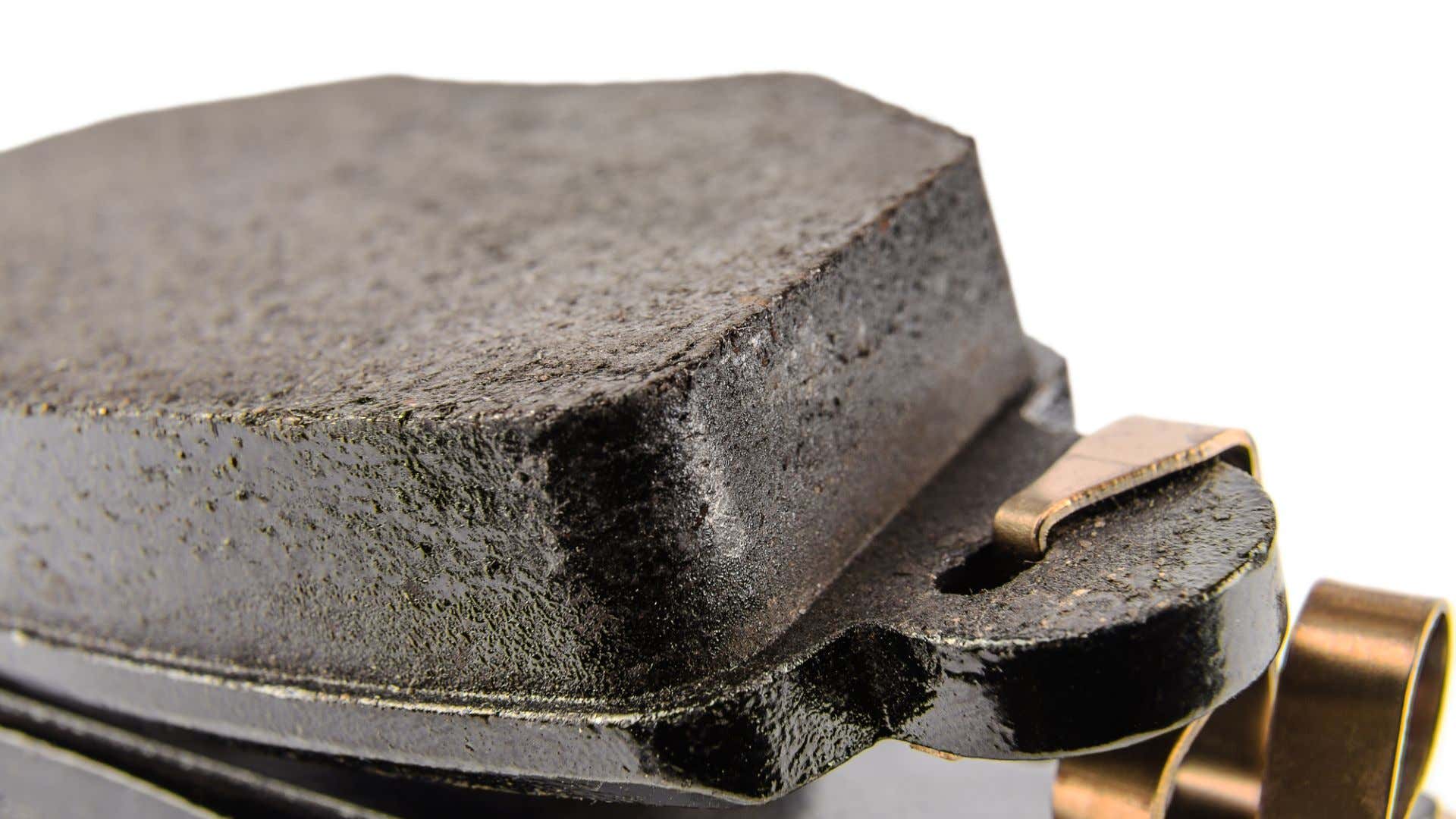how to check brake pads without removing tire
The Drive and its partners may earn a commission if you purchase a product through one of our links. Read more.
Brakes are those car components that most people generally forget about until they can't—why hello, tree, would you like to be friends? Brake pads are even more forgotten, despite the fact that they play a critical role in your car's health, as well as your and your family's safety.
While many attribute a car's stopping ability to the entire braking system, the brake pads are the culprits you should be most thankful for. Pressed into the brake rotor, a brake pad's friction surface halts your momentum and keeps you from making the evening news. Like tires, oil, coolant, and batteries, brake pads wear out over time and through use. But determining how long brake pads last may seem outwardly complicated to the uninitiated.
In actuality, it's pretty easy, as is determining how much life you still have left in your brake pads. Without further ado, let The Drive's crack informational team school you in the lost language of brake pads.

Depositphotos
A set of brake pads.
What Are the Types of Brake Pads?
Brake pads come in a variety of shapes and sizes, all of which can be categorized into three types: non-metallic organic, semi-metallic, and ceramic. Each pad variant has advantages and disadvantages, depending on the vehicle and the driver's mission.
Let's get learned.
Non-Metallic Organic
Not to be confused with the dangerously toxic asbestos brake pads, non-metallic organic brake pads use organic fibers within the friction surface of the brake pad. Though quieter than semi-metallic brake pads, non-metallic organic brake pads wear the fastest of all brake pads.
Related post: Best Brake Pads
Semi-Metallic
Semi-metallic brake pads are the most common brake pad used. The friction surface is made up of embedded metallic fibers to help reduce the amount of brake fade at high heat. They produce larger amounts of brake dust compared to a ceramic pad.
Ceramic
Ceramic brake pads are the most expensive of the lot, but that's because they offer the most performance and longevity too. These pads are made of ceramic and copper fibers embedded in the friction surface. They're designed to wick away heat with less fade and reduce the amount of brake dust put out.

Depositphotos
If your brake pads look like this, it's time to replace them.
How Long Do Brake Pads Last?
Your average brake pad is engineered to last about 50,000 miles, though driving styles, use, and environmental factors play factors in their longevity.
Performance-oriented brake pads trade durability for enthusiastic driving and repeated abuse while bargain brake pads trade durability for affordability.
Each car, truck, and SUV manufacturer will denote how long your brake pads are good for in your car's owner's manual or on its website. Aftermarket brake pads will display their engineering lifespan on the box that the brake pads come in.
Why Do My Brake Pads Wear Out Quickly?
Well, lead-foot Larry, you may be driving a bit too enthusiastically. Hard stops, sharp stabs, and poorly modulated left-footing braking can all affect your brake pads' health. Other variables include faulty brake calipers, air in your hydraulic brake lines, or leaving your car sitting for more than a year.
How, then, do you know if your brake pads are worn?

Depositphotos
Brake pads resting on a brake rotor.
How Do I Know If My Brake Pads Are Worn?
Figuring out that your brake pads are caput is sometimes painfully obvious. You may lose braking pressure and performance, or if you're super unlucky, crash into the rear of your garage.
You may also hear a squeaking noise emanating from your brakes. Brake pads consist of the friction material which pushes against the brake rotor to halt your momentum, the backing plate that slots into the brake caliper, and the slot. The slot is a small crevice that, when worn down and nearing the end of its life, will cause the brakes to emit a sharp and unmistakable squeaking noise.
Is It Hard To Replace Brake Pads?
No! With a little know-how and a few tools, replacing your brake pads is a solid beginner DIY project. If you've never done it before, consult a guide and give yourself ample time to complete the job, as you want to ensure you do it right. Because if you don't, well, crashy, crashy.
Replacing brake pads takes about two to four hours depending on the car, how many pads you're replacing, and how stocked your toolbox is.
How Much Does It Cost To Replace Brake Pads?
Brake pads range from $30 to $50 but could reach a couple hundred dollars depending on the car (e.g. a Porsche Taycan won't have the same brake pads as a Nissan Versa).
Get Help With Brake Pad Wear From Mechanics On JustAnswers
The Drive recognizes that while our How-To guides are detailed and easily followed, a rusty bolt, an engine component not in the correct position, or oil leaking everywhere can derail a project. That's why we've partnered with JustAnswers, which connects you to certified mechanics around the globe, to get you through even the toughest jobs.
So if you have a question or are stuck, click here and talk to a mechanic near you.

Depositphotos
Brake pads.
Pro Tips For Determining If Your Brake Pads Are Good
Over the years, The Drive's editors have replaced the brake pads of everything from a 1991 Plymouth Acclaim, to a 2001 Dodge Durango, a 1998 BMW 323 iS, a 1970 Opel GT, and a 2017 Volkswagen Tiguan, along with a few others. Here are our pro tips for determining if your brake pads are good.
- If they're squeaking, it's time to change. It'll start quiet and over the course of a few weeks to a month will become unbearably loud. Replace them immediately.
- You can visually inspect your brake pads friction surface too. Jack up your car, remove the wheel, and see how thick your brake pads are by looking into the caliper. If they're almost as thin as the brake pad's backing plate, it's time to replace them.
- Replace pads in pairs. This will help maintain even brake feel and prevent uneven wear on the rest of the braking system.
Featured Brake Pad Products
Bosch QuietCast Premium Disc Brake Rotor
Akebono ProACT Ultra-Premium Ceramic Brake Pad Set
Wagner QuickStop Ceramic Brake Pad Set
StopTech 309.10780 Street Performance Front Brake Pads
Got a question? Got a pro tip? Send us a note: guidesandgear@thedrive.com
how to check brake pads without removing tire
Source: https://www.thedrive.com/cars-101/35050/how-long-do-brake-pads-last
Posted by: barkerwishis.blogspot.com

0 Response to "how to check brake pads without removing tire"
Post a Comment